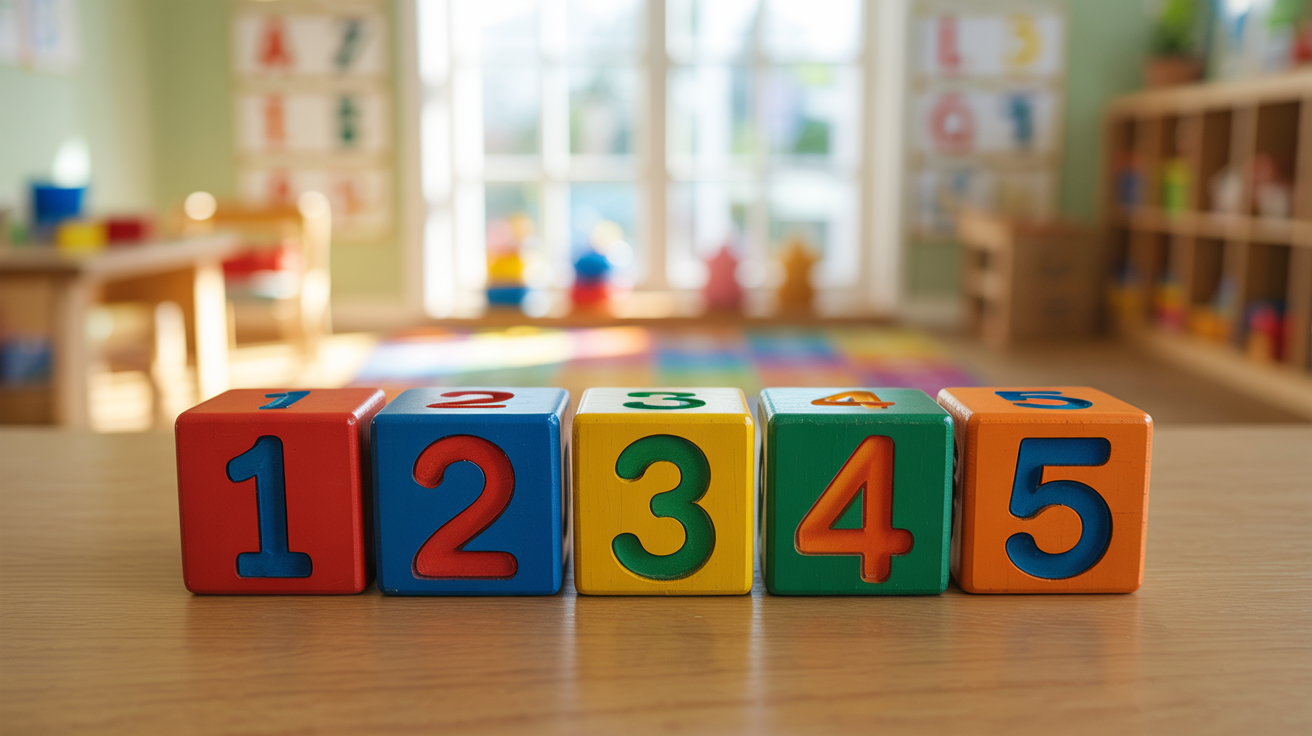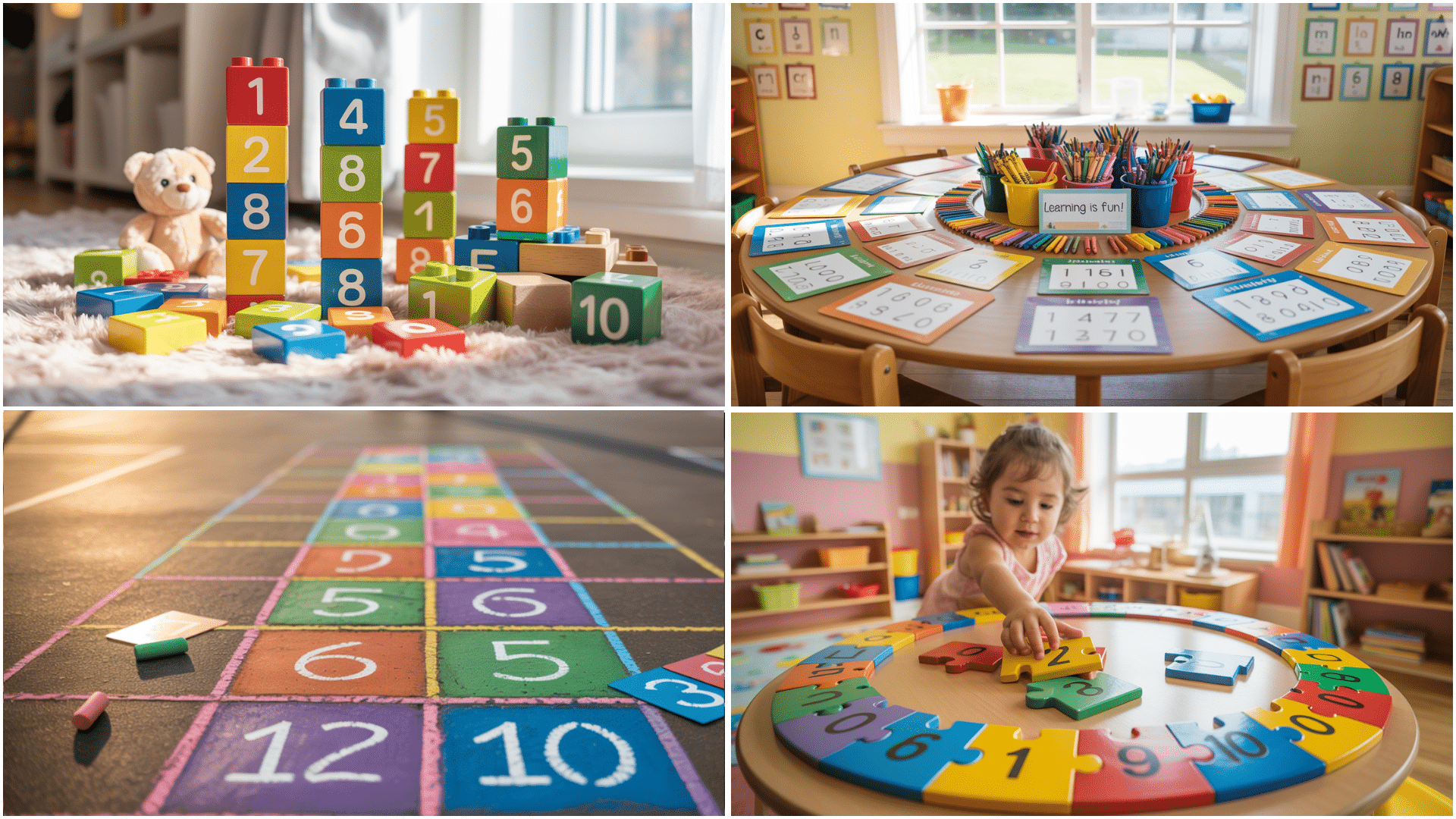Numbers capture young minds’ interest, and the numbers activity is a fun way to nurture that enthusiasm. This approach engages kids with hands-on tasks that make math feel like play, not work.
It tackles the challenge of building early math skills by turning counting, patterns, and number recognition into engaging experiences.
Parents and teachers love how it fits into busy days, offering simple yet effective ways to nurture a child’s confidence in numbers.
The activity grows with kids, keeping them excited as they learn. It’s a practical tool that sets the stage for lifelong math success, making it a go-to for anyone guiding little learners.
Why the 100 Numbers Activity Matters in Early Childhood Education?

The number activity is a key tool in early childhood education because it helps young children recognize and understand numbers up to 100.
This activity builds a strong foundation for number recognition and counting, which are essential skills for future math learning.
By working with a 100 chart, children learn to identify patterns, count in sequence, and understand the order of numbers.
These skills support preschool and kindergarten math curricula by making abstract concepts more concrete and engaging. The activity also encourages children to practice counting out loud and visually track numbers, which improves both memory and attention.
As children become more comfortable with numbers, they gain confidence and develop a positive attitude toward math. Overall, the activity makes learning numbers fun and interactive, setting the stage for more advanced math skills in later grades.
Key Benefits of the 100 Numbers Activity for Young Learners
The 100 numbers activity offers several key benefits for young learners, making it a valuable part of early education.
1. Boosts Cognitive Growth: Engaging with numbers up to 100 helps children develop logical thinking, pattern recognition, and problem-solving skills, which are vital for early cognitive development.
2. Improves Concentration: The activity requires focus and attention to detail as children search for, identify, and sequence numbers, helping to lengthen their attention span.
3. Strengthens Fine Motor Skills: Handling counters, markers, or stickers to mark numbers on a chart allows children to practice precise hand movements, enhancing their fine motor control.
4. Promotes Interactive Learning: The activity encourages group participation and discussion, making learning more social and enjoyable for children.
5. Fosters Family Involvement: Parents and caregivers can easily join in, turning the activity into a fun, shared experience that supports learning at home and strengthens family bonds.
Fun 100 Numbers Activity Ideas to Try with Kids

With a little creativity, you can turn it into an exciting experience for kids. Even when at home or in the classroom, these engaging ideas will keep them learning and having fun:
1. Number Hopscotch
Set up a hopscotch grid on the floor with numbers from 1 to 100. Call out a number, and the child hops to it, reinforcing their number recognition.
This activity combines physical movement with number learning, helping children engage with numbers while building motor skills and coordination.
- Materials Needed: Chalk or tape, number cards
- Age Range: 3–6 years
- Skill Level: Beginner
2. Number Hunt
Hide number cards around the room or outdoor space. Children search for the numbers in sequence and arrange them in order. This game encourages number recognition and sequencing, promoting early math skills and memory.
- Materials Needed: Number cards (1-100), small containers or pockets for hiding
- Age Range: 4–6 years
- Skill Level: Intermediate
3. Roll and Count
Using dice numbered 1-6, children roll the dice and add the rolled number to a growing total. They continue until they reach 100. This activity supports number recognition, counting, and basic addition skills.
- Materials Needed: Dice, paper, pencil
- Age Range: 4–6 years
- Skill Level: Beginner
4. Number Match-Up
Provide children with a set of number cards (1-100) and corresponding pictures or objects that match the numbers.
Children will match the numbers to the correct pictures. This activity reinforces number recognition and helps with visual learning.
- Materials Needed: Number cards, picture cards, or objects
- Age Range: 3–5 years
- Skill Level: Beginner
5. Number Bingo
Create bingo cards with random numbers from 1 to 100. Call out numbers, and children mark them on their cards.
The first player to fill a row or column wins. This game encourages number recognition, listening skills, and focus.
- Materials Needed: Bingo cards, markers, number caller
- Age Range: 4–6 years
- Skill Level: Intermediate
6. Dot-to-Dot
Create a dot-to-dot page where children connect numbers from 1 to 100. As they connect the dots, they reveal an image, helping with number recognition and fine motor coordination.
- Materials Needed: Printable dot-to-dot pages
- Age Range: 4–6 years
- Skill Level: Beginner
7. Number Puzzles
Create number puzzles using numbers 1 to 100 that children can piece together. As they complete the puzzles, they reinforce their knowledge of the number sequence and improve their problem-solving skills.
- Materials Needed: Number puzzle pieces (1-100)
- Age Range: 4–6 years
- Skill Level: Intermediate
8. Counting with Blocks
Use blocks or Legos to represent numbers up to 100. Have children stack blocks to match the numbers called out, counting as they go.
This activity helps children with counting, number recognition, and fine motor skills.
- Materials Needed: Blocks or Legos
- Age Range: 3–5 years
- Skill Level: Beginner
9. Hundred Chart Coloring
Provide a hundred chart and ask children to color in specific numbers, such as multiples of 5 or even numbers. This reinforces number recognition, pattern recognition, and counting skills.
- Materials Needed: Hundred chart, crayons or markers
- Age Range: 4–6 years
- Skill Level: Beginner
10. Flashcard Frenzy
Flash number cards from 1 to 100 and have children call out the number they see or perform an action for that number (e.g., jump 7 times for the number 7).
This activity builds number recognition and reinforces physical movement with numbers.
- Materials Needed: Number flashcards (1-100)
- Age Range: 3–5 years
- Skill Level: Beginner
11. Find the Missing Number
Provide a sequence of numbers with one or two numbers missing (e.g., 1, 2, __, 4).
Children identify the missing number and fill in the gap. This activity promotes number recognition and helps children understand the sequence of numbers.
- Materials Needed: Number sequence worksheets
- Age Range: 4–6 years
- Skill Level: Intermediate
Strategies to Involve Kids in 100 Numbers Activity Play

Getting children actively involved in the 100 numbers activities is all about making it fun, interactive, and hands-on.
Here are some effective strategies to engage kids and help them develop a love for numbers:
- Make It a Game: Turn the activity into a fun challenge. Time them as they find numbers or have them race to fill in the missing ones.
- Use Their Interests: Add their favorite themes, like animals, colors, or cartoons, to the 100 chart or number cards.
- Let Them Be Creative: Let kids color their own 100 charts or make number crafts using paper, stickers, or blocks.
- Move Around: Use the numbers activity in a hopscotch game or scavenger hunt to add movement and excitement.
- Work Together: Play in pairs or small groups. Kids can help each other and learn by talking about numbers as they go.
Wrapping It Up
Engaging your child in the numbers activity fosters a love for math while building essential skills. These playful exercises, rooted in counting and pattern recognition, lay a strong foundation for future learning.
By incorporating these activities consistently at home or in the classroom, parents and educators can nurture confidence and curiosity in young learners.
The joy of learning numbers through hands-on tasks supports critical thinking and problem-solving.
Which Numbers Activity did your child enjoy most? Share their favorite in the comments! We’d love to hear your feedback or any creative twists you added to make math fun!




